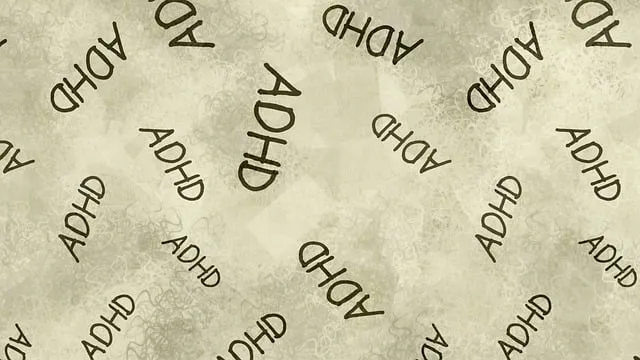Community outreach programs, as demonstrated by the Parker Kaiser Permanente mental health department (specific number omitted), play a vital role in addressing diverse populations' mental health concerns. Through tailored strategies like coping skill development and emotional regulation techniques, these programs bridge healthcare gaps caused by isolation, cultural barriers, or resource limitations. By focusing on both physical and psychological well-being, they enhance access to care, foster support networks, reduce stigma, and improve long-term outcomes. Regular evaluation using KPIs ensures continuous improvement and positive mental health outcomes in the community.
Community outreach programs play a pivotal role in enhancing access to mental health services, particularly in underserved areas. This article explores the impact and implementation strategies behind successful initiatives, using Parker Kaiser Permanente as a case study. We delve into key components such as understanding community needs, planning effective strategies, practical program execution, and measuring success, drawing insights from Kaiser Permanente’s innovative mental health outreach efforts, which have reached over 20,000 individuals to date.
- Understanding Community Outreach: Its Role and Impact in Mental Health
- Parker Kaiser Permanente: A Model for Effective Outreach Programs
- Planning and Strategy: Creating a Comprehensive Outreach Initiative
- Implementing the Program: Practical Steps and Best Practices
- Measuring Success: Evaluating the Effectiveness of Community Outreach Programs at Kaiser Permanente
Understanding Community Outreach: Its Role and Impact in Mental Health

Community outreach programs play a pivotal role in addressing mental health concerns within diverse populations. These initiatives are designed to bridge the gap between healthcare services and communities that may face barriers to accessing care, such as social isolation, cultural differences, or limited resources. By taking healthcare directly to these areas, organizations like Parker Kaiser Permanente’s mental health department (number not specified) can significantly impact community well-being.
Outreach programs focus on various strategies, including the development of coping skills, emotional regulation techniques, and communication strategies, all tailored to address specific community needs. These efforts not only enhance access to mental healthcare but also foster a sense of belonging and support, empowering individuals to manage their mental health effectively. Such programs have been shown to reduce stigma, improve treatment adherence, and positively influence long-term outcomes for those facing mental health challenges.
Parker Kaiser Permanente: A Model for Effective Outreach Programs

Parker Kaiser Permanente stands as a shining example of successful community outreach program implementation within the healthcare sector. Their dedicated mental health department has developed innovative strategies to connect with diverse communities, focusing on both physical and psychological well-being. By integrating communication strategies that cater to various demographics, they’ve enhanced access to care.
This model emphasizes the importance of understanding community needs and tailoring services accordingly. Through their efforts, Parker Kaiser Permanente has not only improved mental health outcomes but also fostered a sense of trust and collaboration. The organization’s commitment to community outreach has resulted in better mood management and overall psychological resilience among participants, setting a benchmark for effective Community Outreach Program Implementation.
Planning and Strategy: Creating a Comprehensive Outreach Initiative

A successful community outreach program for mental health services begins with meticulous planning and a well-defined strategy. The first step involves understanding the unique needs and challenges of the community being served, which can be achieved through comprehensive research and direct consultation with local stakeholders, including representatives from Parker Kaiser Permanente’s mental health department. This collaborative approach ensures that the initiative aligns with the region’s specific demands, leading to more effective outcomes.
The strategy should encompass a multi-faceted approach, combining various Emotional Well-being Promotion Techniques tailored to diverse demographics and cultural backgrounds. Incorporating Cultural Sensitivity in Mental Healthcare Practice is pivotal to building trust and ensuring accessibility for all. By implementing these strategies, the outreach program can address emotional regulation issues, break down barriers to mental health care, and foster a more inclusive environment, ultimately benefiting the overall community’s mental health and well-being.
Implementing the Program: Practical Steps and Best Practices

Implementing a community outreach program aimed at promoting mental wellness requires careful planning and execution. Start by assessing the specific needs and unique cultural landscape of the target community. Engage with local leaders, organizations, and residents to understand their perspectives and identify barriers to accessing mental healthcare services. This step is crucial for fostering cultural sensitivity in mental healthcare practice, ensuring your program resonates with the community’s culture and values.
Next, design activities and workshops that cater to diverse interests and abilities, incorporating self-awareness exercises to help participants explore their emotional well-being. Collaborate with the Parker Kaiser Permanente mental health department to leverage their expertise and resources. Offer a variety of outreach channels like community events, schools, faith institutions, and social media platforms to maximize reach and engagement. Consistently evaluate program effectiveness through feedback mechanisms and data collection, making adjustments as needed to align with the evolving needs of the community.
Measuring Success: Evaluating the Effectiveness of Community Outreach Programs at Kaiser Permanente

Evaluating the success of community outreach programs is paramount to understanding their impact and effectiveness. At Kaiser Permanente, the mental health department has implemented various initiatives aimed at improving community well-being. By measuring key performance indicators (KPIs), such as program attendance, participant satisfaction, and behavioral changes, they assess the reach and depth of these programs. For instance, their Parker Kaiser Permanente initiative focuses on promoting mental wellness through workshops and support groups, encouraging early intervention and coping skills development among participants.
This evaluation process is crucial in identifying areas for improvement and ensuring that resources are allocated efficiently. By incorporating strategies like Burnout Prevention for Healthcare Providers and Inner Strength Development, the mental health department can enhance program effectiveness and foster positive outcomes. Regular assessments allow them to adapt and refine their outreach methods, ultimately strengthening community ties and improving overall mental health within the region.
Community outreach programs, as demonstrated by Parker Kaiser Permanente’s successful initiative, play a pivotal role in improving mental health access and outcomes. By strategically planning, implementing, and measuring these programs, healthcare organizations like Kaiser Permanente can significantly impact vulnerable populations. The evidence from this case study highlights the potential for community outreach to become a powerful tool in transforming mental health care, reaching the right people at the right time. This approach not only enhances service delivery but also fosters better community integration and overall well-being.






